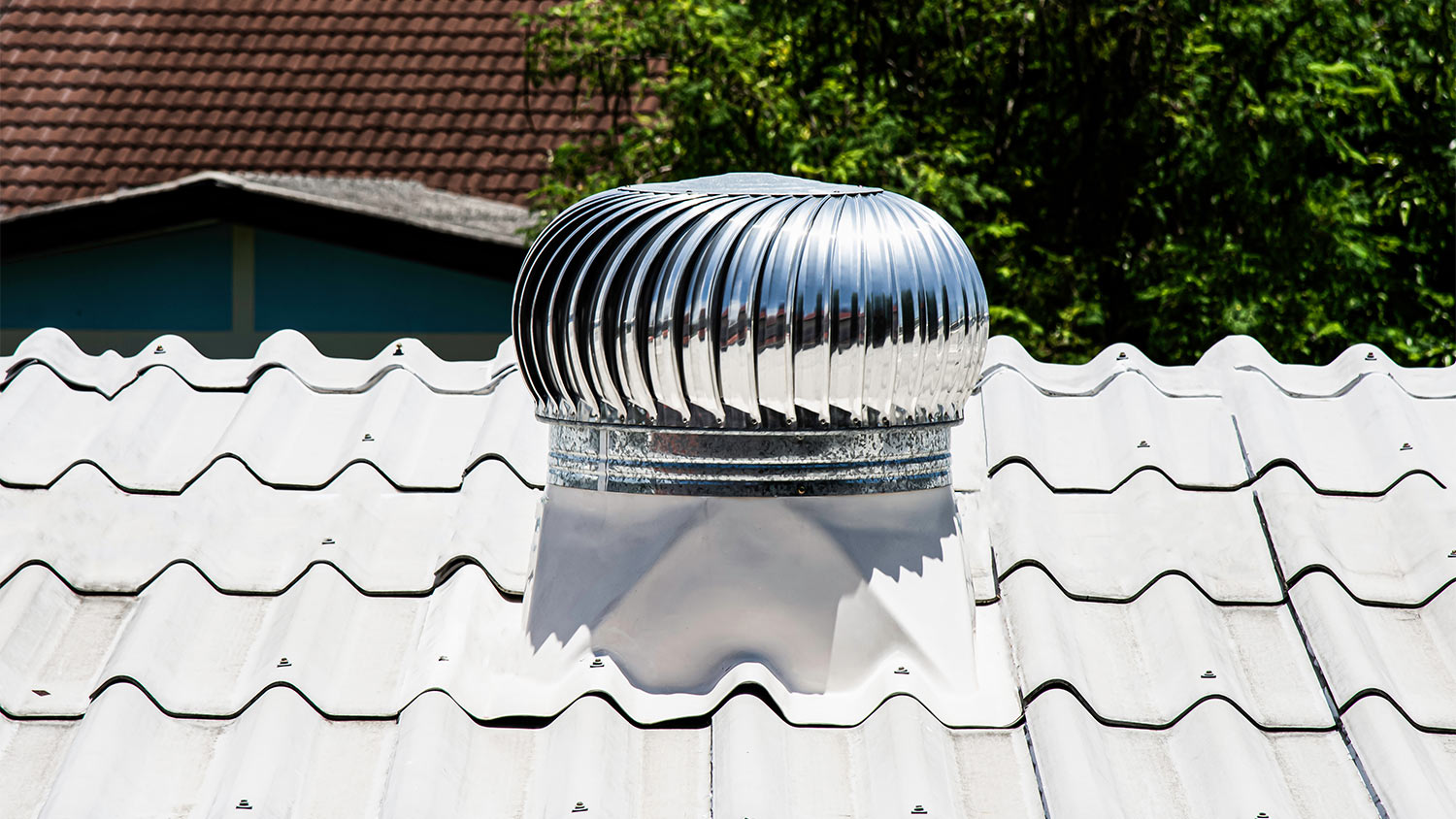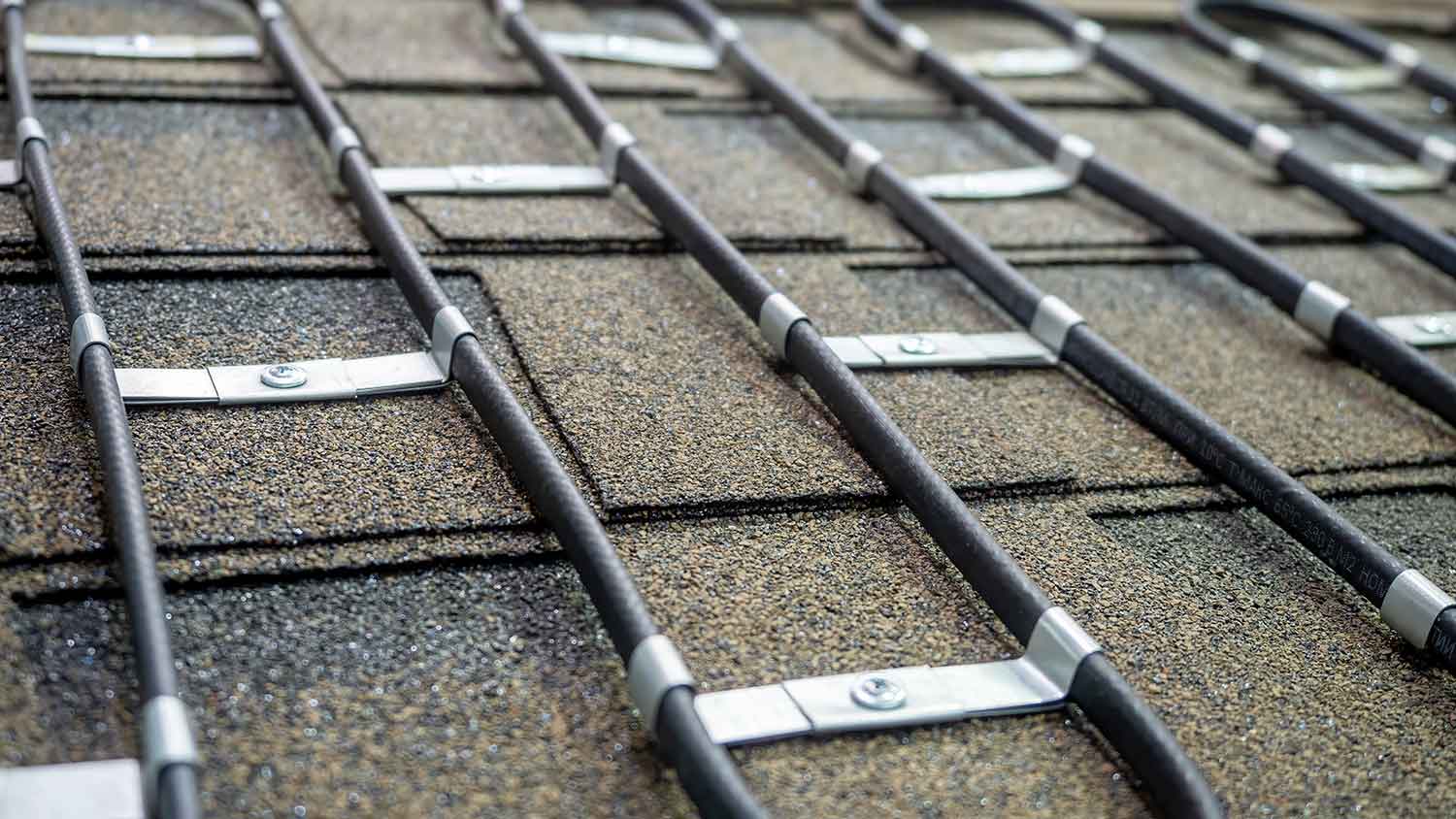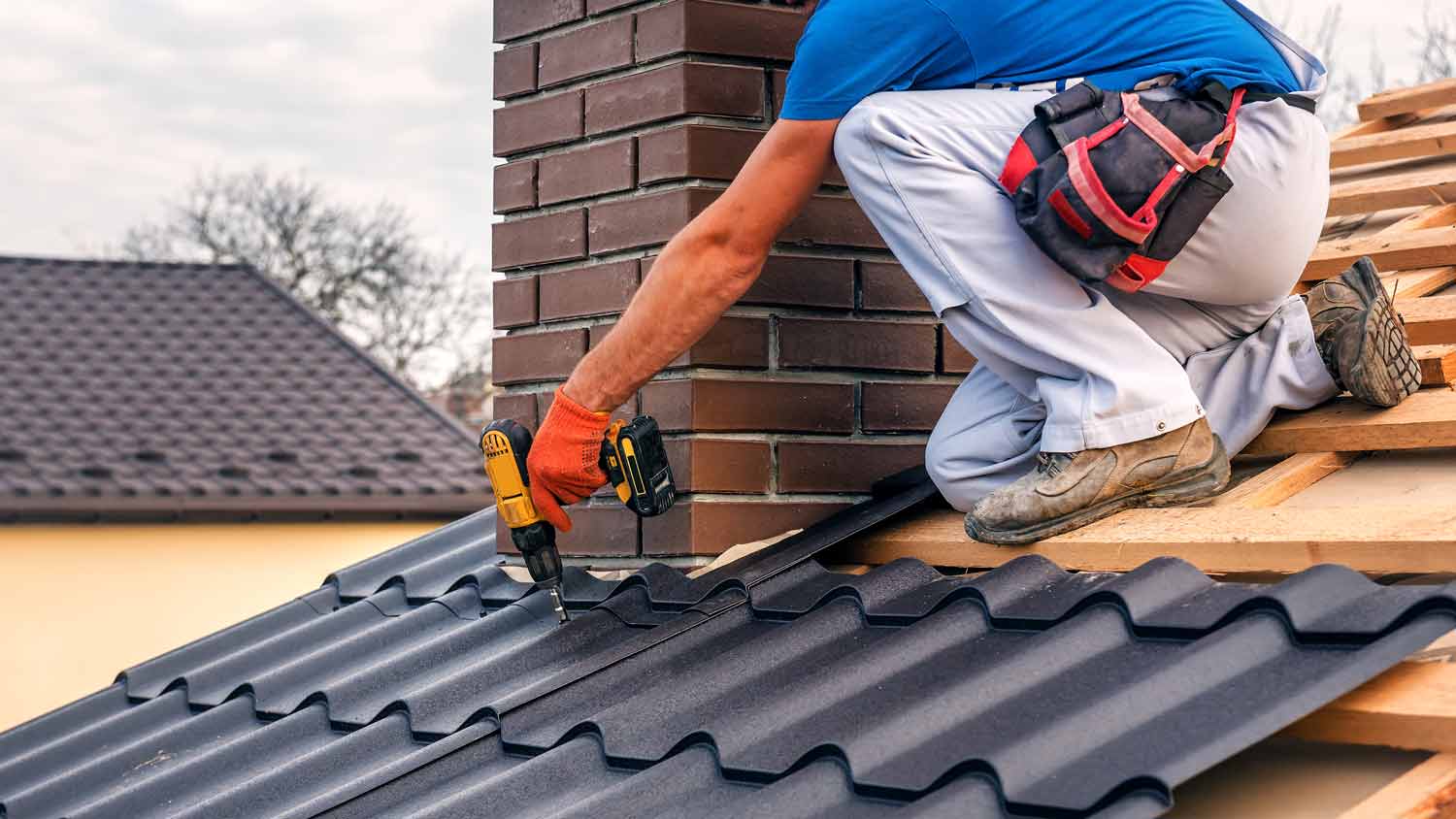
Wondering who installs roof vents and who to call? Roofing contractors handle it best. See other options and how pros get it done
Roof trusses cost an average of $16,500


Roof trusses cost an average of $16,500, with most homeowners spending between $7,500 and $35,000 on average.
Materials, labor, roof pitch, and truss size affect your total cost. Location, weight load requirements, and truss spacing also influence pricing.
Wood trusses start at $60 per truss, while metal trusses cost between $150 and $700 each.
Selecting the right roof truss enhances your home’s structural integrity and boosts its value.
Hiring a professional roofer ensures proper truss installation, safety, and compliance with building codes.
This article was updated using automation technology and thoroughly reviewed for accuracy by HomeAdvisor Editor Ryan Noonan.
The average roof truss cost for a standard-sized home ranges from $7,500 to $35,000 with an average total of $16,500. Final pricing hinges on materials, labor, pitch, and truss span. Because you’ll likely replace trusses only once or twice in a home’s lifetime, it pays to budget carefully and bring in a licensed roofer to keep the job safe and up to code.
Roof trusses are pre-fabricated frames that support your roof, commonly made of wood joined with steel plates. Using trusses can lower labor costs because they reduce on-site work. A standard roof truss has three main parts:
Bottom chord: The horizontal beam at the base.
Top chords: The angled beams that form the roof’s peak.
Webbing: The internal bracing that adds support.
Several factors affect the cost of roof trusses, which cost $3.50 to $9.25 per linear foot. Here's what influences the pricing:
The size, or span, of the truss is a key cost factor. Span refers to the length of the bottom chord from end to end. Larger trusses cost more. However, what's more important is the length of individual boards and if significant cutting and waste occur during installation.
Average roof truss pricing depends heavily on the number of boards required for their construction. Therefore, the span and pitch of the truss are only important for determining how much material and waste are necessary for construction.
For example, a 10-foot span may need just as many boards as a 12-foot span but will require more cuts and more waste, so the cost difference is minimal.
| Size (Feet) | Average Cost (Materials Only) |
|---|---|
| 20 | $70–$190 |
| 30 | $100–$280 |
| 40 | $140–$370 |
| 50 | $170–$460 |
| 60 | $210–$560 |
Trusses are built from wood or steel. Wood is the go-to choice for most homes and runs about half the price of steel. Steel shows up more often in pole barns, commercial buildings, or designs that need extra strength.
| Material | Average Cost (per Truss) |
|---|---|
| Wood | $60–$500 |
| Metal | $150–$700 |
Roofing pros charge $25 to $75 per hour to set trusses. On new construction, labor runs $4 to $10 per square foot; removing old trusses adds another $4 to $5 per square foot. Expect rates on the higher end in dense, hard-to-access urban neighborhoods.
Your roof trusses need to support the weight of roofing materials and any local snow loads. In areas with heavy snowfall, you'll need sturdier trusses, which can cost up to 25% more due to bulkier designs or different styles.
A steeper roof pitch requires trusses with more lumber, which increases the cost. Higher pitches mean you'll pay more for your roof trusses.
Most installers set trusses 24 inches on center. The longer your roof and the closer the spacing, the more individual trusses you’ll need—and the higher the overall price.
Hiring a crane for installation costs $300 to $1,000, depending on the time required.
Removing new construction debris costs $100 to $200. Disposing of old trusses costs $300 to $1,800.
The type of building impacts your framing costs. Here's a breakdown of costs by building type.
| Building Type | Average Cost |
|---|---|
| New home | $7,500–$35,000 |
| Pole barn | $5,300–$15,000 |
| Garage | $3,500–$9,000 |
| Home addition | $3,000–$12,000 |
Home framing costs for an average 2,000-square-foot home range between $14,000 and $32,000 or more. A truss roof costs half of that, or $7,500 to $35,000.
Pole barn roofs cost between $5,300 and $15,000. They are less expensive than residential ones because they don't need to support a ceiling or insulation. Due to their large, open areas, pole barns are excellent candidates for steel trusses.
Adding a detached garage roof costs an average of $3,500 to $9,000, depending on whether the garage is finished and the type of roofing. Detached garages tend to cost slightly less than an attached garage because no home tie-ins are necessary.
Home additions cost between $22,000 and $63,000, and roof truss costs range from $3,000 to $12,000. Additions, like a lean-to, use mono truss systems with a single slope.
Roof truss classification and naming are based on two factors:
The shape of the interior supports or webbing
The exterior shape of the top and bottom chords
Any combination of the external shape and internal webbing is possible.
| Truss Type | Average Cost (per Truss) |
|---|---|
| King post | $60–$160 |
| Fink | $120–$260 |
| Attic | $100–$400 |
| Gable | $80–$800 |
| Hip | $100–$400 |
| Mono | $60–$450 |
| Gambrel | $100–$700 |
| Flat | $75–$250 |
| Scissor | $120–$500 |
Common trusses and their variations are named for different styles of supports, or webbing, inside the triangle structure. The names come from the variety of web configurations needed for larger roofs and different load-bearing needs. The longer the bottom chord, the more webbing is needed.
King post: The simplest type with a single post placed vertically in the middle.
Fink: Two supports start at the peak and are angled down and away from each other. Modified finks create a “W” shape. They are used extensively in long configurations.
Attic: Creates usable space in the attic for storage or additional living space.
Gable or end truss: Uses vertical webbing for capping the ends of a roof.
Exterior shapes denote the style and have different names and uses:
Hip: Any type with a small flat portion on top.
Mono: Any type with only one pitch; looks like half of a truss.
Gambrel: Any type with two pitches to a side, like a barn roof.
Flat: Uses parallel top and bottom chords with “W” shaped supports; used for flat roofs.
Scissor: A special type that uses a modified bottom chord.
Consider these cost-saving strategies to make your roof truss project more budget-friendly:
Work with your roofing pro to choose a lower-cost truss that works best for your structure and skip the higher-priced options.
Use prefab trusses, which are more affordable than customized options.
Get detailed quotes from at least three local roofing companies to ensure competitive pricing.
Installing roof trusses isn’t a DIY project. A professional roofer brings the equipment, crew, and code knowledge you need for a safe, accurate install. Tackling the job yourself can void warranties and lead to expensive fixes. For peace of mind—and a roof that lasts—hire a qualified pro.
No place is more important than your home, which is why HomeAdvisor connects homeowners with local pros to transform their houses into homes they love. To help homeowners prepare for their next project, HomeAdvisor provides readers with accurate cost data and follows strict editorial guidelines. After a project is complete, we survey real customers about the costs to develop the pricing data you see, so you can make the best decisions for you and your home. We pair this data with research from reputable sources, including the U.S. Bureau of Labor Statistics, academic journals, market studies, and interviews with industry experts—all to ensure our prices reflect real-world projects.
From average costs to expert advice, get all the answers you need to get your job done.

Wondering who installs roof vents and who to call? Roofing contractors handle it best. See other options and how pros get it done

Wondering who installs roof heat cables? Hire a roofer for safe installation. Compare pros vs. handypeople and see how the job gets done

Who fixes roofs? See who to hire for roof repairs, when to call a roofing contractor or roofer, and what licensed pros provide.

Wondering who to call for a leaky roof? Learn why a roofer—not a plumber—handles roof leak repair and how pros fix the problem.

Wondering who repairs soffit and fascia? Find who to call—roofers, carpenters, or gutter pros—and get smart hiring tips to protect your roof.

Wondering who repairs roof trusses? Learn when to call roofing contractors, why DIY risks collapse, and how pros repair trusses. Get the right help now.